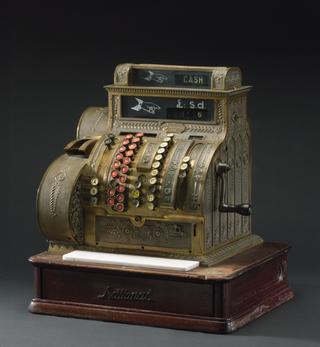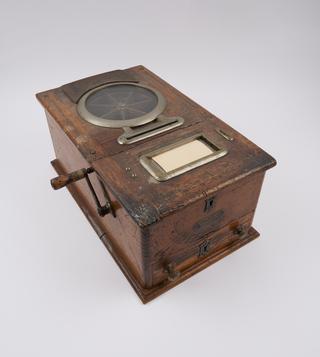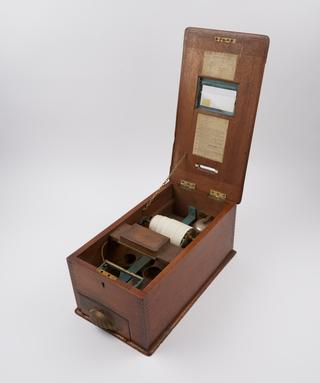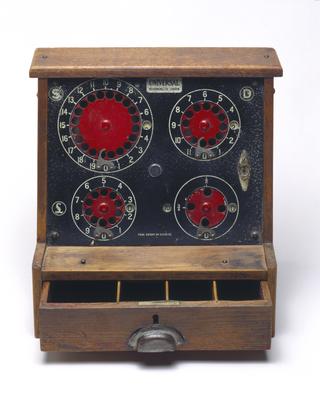
NCR cash register for British pre-decimal currency, c.1950
- Made:
- Dayton
- maker:
- NCR Corporation
NCR cash register designed for British pounds, shilling and pence (LSD), c.1950
In 1879, the American bar owner James Ritty invented the cash register. He hoped his invention would thwart his employee's attempts at pocketing money - his first model was called 'Ritty's Incorruptible Cashier'.
Ritty sold his company, cash register and patents in 1881 and a new company was established - the National Manufacturing Company. In 1884, the company was renamed the National Cash Register Company, maker of the first mechanical cash registers, and their first offices were based in Dayton, Ohio. The National Cash Register Company (NCR) dominated the production and sale of cash registers around the world. NCR cash registers were very widespread after the First World War and have continued to operate into the twenty-first century as NCR.
In 1885, J.W. Allison, a visitor from England, observed the NCR self-adding cash register at a Chicago exhibition and learned the machine could be adapted for English currency, that is pounds, shillings, and pence. Impressed, Allison became NCR’s first international agent, based in Liverpool, England.
NCR continued to make cash registers for British pounds, shilling and pence (or LSD) until British sterling was decimalised in February 1971. This particular NCR cash register for British currency was made around 1950.
Details
- Category:
- Cash Registers
- Object Number:
- 1983-1159
- type:
- cash registers
- credit:
- Look Ahead (Beacon Hostels)




